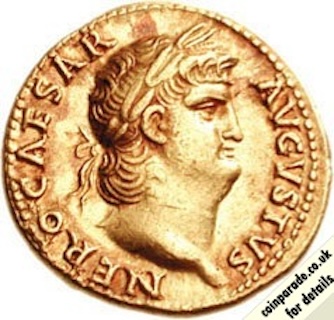
List items on:
 | RARE CAESAR BRUTUS IDES OF MARCH GOLD AUREUS COIN MUSEUM SPECIMEN AN 333 £ 15.00 |
 | ROMAN GOLD AUREUS COLLECTION x 15 MODERN MUSEUM SPECIMEN COINS - SEE DESCRIPTION £ 55.00 |
 | Roman Coin - Domitian - Gold Aureus - Roma - Romulus and Remus £ 3,690.00 |
 | Antoninus Pius, gold aureus c. 154-5 AD, Emperor standing left, holding globe £ 10,000.00 |
 | Rare Julius Caesar Gold Aureus Coin struck C. 48 47 BC Gallic Trophy of Arms £ 5.99 |
 | Rare Caligula Gold Aureus Coin struck AD 37-41 MUSEUM SPECIMEN £ 4.99 |
 | Roman Coin - Nero - Gold Aureus - Lugdunum - Lyon - 50-54 AC £ 5,800.00 |
 | Roman Coin - Faustina Senior - Gold Aureus - Roma - Old collection - 141 AC £ 5,750.00 |
List items on:

